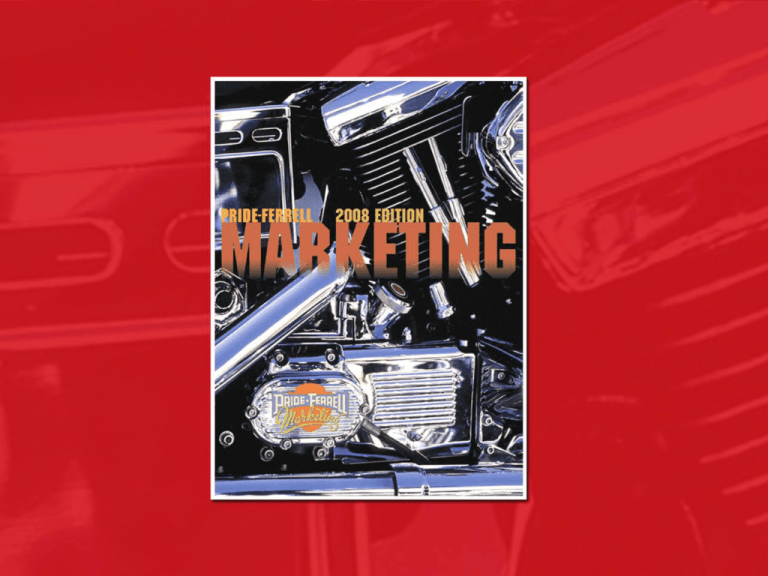
Chapter 19
Advertising and
Public Relations
Objectives
• Describe the nature and types of advertising
• Explore steps in developing an advertising
campaign
• Identify responsibility for developing advertising
campaigns
• Examine public relations tools
• Analyze how public relations is used and
evaluated
Copyright © Houghton Mifflin Company. All rights reserved.
19 | 3
The Nature and
Types of Advertising
• Advertising – paid nonpersonal communication
about an organization and its products
transmitted to a target audience through mass
media
– Promotes anything advertisers want to publicize
Copyright © Houghton Mifflin Company. All rights reserved.
19 | 4
Types of Institutional Advertising
• Institutional – advertising that promotes
organizational images, ideas, and political
issues
• Advocacy – advertising that promotes a
company’s position on a public issue
Copyright © Houghton Mifflin Company. All rights reserved.
19 | 5
Types of Product Advertising
• Product advertising – promotes the uses,
features, and benefits of products
• Pioneer – focuses on a product category by
informing potential buyers about the product
• Competitive – points out a brand’s special
features, uses, and advantages relative to
competing brands
Copyright © Houghton Mifflin Company. All rights reserved.
19 | 6
Developing an
Advertising Campaign
• Advertising campaign – the creation and
execution of a series of advertisements to
communicate to a particular target
audience
Copyright © Houghton Mifflin Company. All rights reserved.
19 | 7
Steps In Developing And
Implementing An Advertising Campaign
Copyright © Houghton Mifflin Company. All rights reserved.
19 | 8
Creating the Advertising
Platform
• Advertising platform – basic issues or selling
points to be included in an advertising campaign
• Important to customers
Copyright © Houghton Mifflin Company. All rights reserved.
19 | 9
Determining the Advertising
Appropriation
• Advertising appropriation – budget for a specific
time period
–
–
–
–
Geographic size of market
Distribution of buyers
Type of product
Firm’s sales volume vs. competitor’s sales volume
• Appropriation for business products vs.
convenience items
Copyright © Houghton Mifflin Company. All rights reserved.
19 | 10
Twenty Leading
National Advertisers
Copyright © Houghton Mifflin Company. All rights reserved.
19 | 11
Techniques in Determining
Advertising Appropriation
• Objective-and-task – determining campaign
objectives and the tasks needed to obtain
objectives
• Percent-of-sales – multiplying the firm’s past
and expected sales by a standard percentage
• Competition-matching – matching competitors
advertising outlays
• Arbitrary – budget specified by high-level
executive in the firm
Copyright © Houghton Mifflin Company. All rights reserved.
19 | 12
Developing the Media Plan
• Media plan – specifies the media vehicles to be
used and the schedule for running
advertisements
– Reach and frequency
• Cost comparison indicator – compares the costs
of ad vehicles in a specific medium in relation to
the number of people reached
• Media schedules – continuous, flighting, and
pulsing
Copyright © Houghton Mifflin Company. All rights reserved.
19 | 13
Advertising
Expenditures By Media
Copyright © Houghton Mifflin Company. All rights reserved.
19 | 14
Advantages/Disadvantages
Of Major Media Classes
Copyright © Houghton Mifflin Company. All rights reserved.
19 | 15
Creating the
Advertising Message
•
•
•
•
Product Features
Characteristics of target audience
Campaign objectives
Choice of media
– Magazines: regional issues
Copyright © Houghton Mifflin Company. All rights reserved.
19 | 16
Geographic Divisions for
Time Regional Issues
Copyright © Houghton Mifflin Company. All rights reserved.
19 | 17
Components of
Advertising Message
• Copy – verbal portion of ads
– Storyboard
• Artwork – illustrations and layout
– Illustrations
– Layout
Copyright © Houghton Mifflin Company. All rights reserved.
19 | 18
Guidelines For Body Copy
1) ID Specific Desire/Problem
2) Recommend Product
3) State Product Benefits
4) Substantiate Claims
5) Ask For Buyer Action
Copyright © Houghton Mifflin Company. All rights reserved.
19 | 19
Signature Elements
•
•
•
•
Trademark
Logo
Name
Address
Copyright © Houghton Mifflin Company. All rights reserved.
•
•
•
•
Attractive
Legible
Distinctive
Easy to Identify
19 | 20
Radio Copy
•
•
•
•
Informal
Conversational
Perishable
Short, Familiar Terms
Copyright © Houghton Mifflin Company. All rights reserved.
19 | 21
Evaluating
Advertising Effectiveness
• Pretests – evaluation of advertisements
performed before a campaign begins
– Consumer jury
• Posttest – evaluation of advertising effectiveness
after the campaign
– Recognition
– Unaided Recall
– Aided Recall
Copyright © Houghton Mifflin Company. All rights reserved.
19 | 22
Who Develops the
Advertising Campaign
• Individual
• Department
• Agency
Copyright © Houghton Mifflin Company. All rights reserved.
19 | 23
Public Relations
Communication efforts used to create and
maintain favorable relations between an
organization and its stakeholders
Copyright © Houghton Mifflin Company. All rights reserved.
19 | 24
Public Relations Tools
•
•
•
•
•
People
Places
Ideas
Activities
Countries
• Publicity – communication
about the organization and/or
its products transmitted through
mass media at no charge
– News release
– Feature article
– Captioned photograph
– Press conference
Copyright © Houghton Mifflin Company. All rights reserved.
19 | 25
Possible Issues
For Publicity Releases
Copyright © Houghton Mifflin Company. All rights reserved.
19 | 26
Evaluating
PR Effectiveness
•
•
•
•
Environmental Monitoring
PR Audit
Communications Audit
Social Audit
Copyright © Houghton Mifflin Company. All rights reserved.
19 | 27
Dealing With
Unfavorable PR
•
•
•
•
•
Prevent Negative Incidents
Establish Policies & Procedures
Expedite Coverage
Be Forthright
Take Prompt Action
Copyright © Houghton Mifflin Company. All rights reserved.
19 | 28

